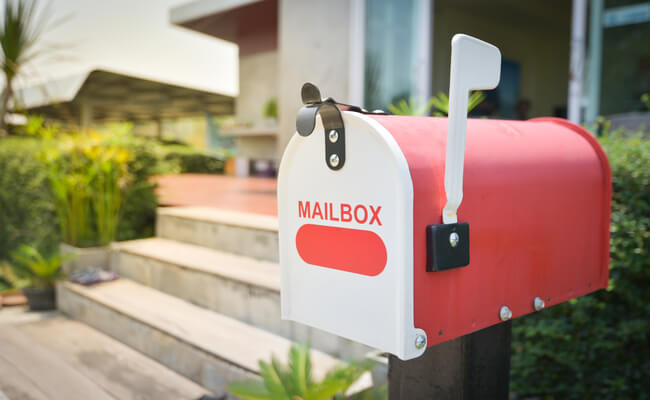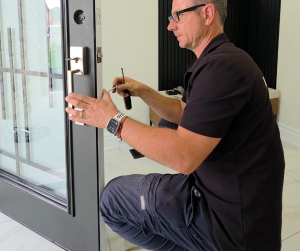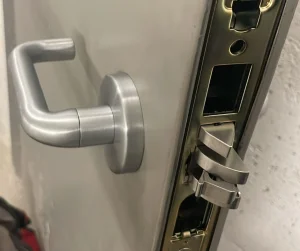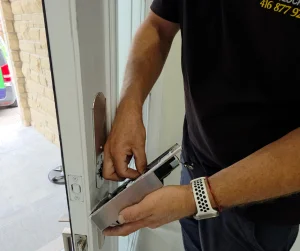It’s easy to ignore your mailbox. It’s just… there. Quiet. But over the years, I’ve come to believe it’s one of the most overlooked vulnerabilities in a home or business. Identity theft doesn’t always start with high-tech hacking – sometimes it starts with an unlocked mailbox. Bank letters. Tax forms. Even pre-approved credit cards. All just sitting there. So if your mailbox has a loose flap, a missing key, or hasn’t been changed since the last tenant – it might be time to take it seriously. In fact, unsecured mailboxes are known targets for opportunistic thieves hunting personal information and organized theft rings have even begun using stolen postal arrow keys to access multiple mailboxes at once. Let’s walk through why this matters more than you think, and what you can do today to protect yourself.

Why Thieves Target Mailboxes
Mail is personal. It’s also full of sensitive info. Even something like a utilities bill confirms your name, your address, and your account number. That’s enough to get started with social engineering scams or even identity fraud.
We’ve seen people get hit with new phone plans, fake loan applications, and stolen refund checks – all because someone grabbed a few envelopes from an unlocked box. The worst part? Victims often don’t realize it’s happening until weeks later. By then, the damage is already done.
And it’s not just homes. Property management companies or multi-unit complexes with shared mail areas are just as exposed. All it takes is one broken lock or a mailbox that looks “easy.”
Common Signs Your Mailbox Lock Isn’t Secure
- Loose or wobbly keyhole
- Key doesn’t turn smoothly
- Box doesn’t latch properly
- No lock at all (yes, it happens)
One client told me their mailbox had been stuck open for months. They didn’t think much of it – until they noticed someone had been opening a credit card in their name. That lock? It was barely attached. A quick mailbox lock change might’ve prevented a financial mess that took months to clean up.
When Should You Change the Lock?
If you’ve moved recently, change it. If the key’s been lost, change it. If you’re not sure who had the last copy? Change it. It’s such a small thing, but the peace of mind is real.
And if you’re a landlord or own a multi-unit property, consider routine mailbox servicing during tenant turnover. It’s as important as swapping keys for the front door. Tenants assume their mail is secure – and if it’s not, you might end up dealing with more than just complaints.
What Kind of Locks Actually Work?
Most mailbox locks use a cam lock system – a basic cylinder that turns a latch inside the box. Some come with wafer tumblers, which are more secure than simple pin styles. Others offer anti-drill plates or keyed-alike systems so you can match your main entry key (not always ideal for security, but convenient).
If your mailbox is part of a wall unit or centralized mail hub, you’ll need to work with a locksmith who knows how to swap lock cores without damaging the structure. That’s especially true for cluster boxes installed by postal services or building developers. Some of those are under postal jurisdiction and require special tools or authorization.
Can You Install It Yourself?
In some cases, yes. For single mailboxes with standard locks, it’s usually a 10-minute job. Remove the old cam lock, slide in the new one, secure the nut, test the turn – done. But if you’re dealing with rusted parts, broken latch tabs, or tight installation space, it’s easy to over-tighten or strip threads.
We’ve had clients who tried to install one themselves and accidentally locked it shut with no way to reopen it. So if it feels tricky, call a residential locksmith. It’s a small service call – and a lot less frustrating than trying to drill it out later.
What If You’ve Already Had Mail Stolen?
Start with the basics. File a mail theft report with your local postal inspector. Then monitor your accounts. Change passwords. Flag your credit with a fraud alert. And yes – replace that lock immediately. If someone already has a key copy, or if they forced it open once, they’ll probably try again.
You can also ask your locksmith about lock rekey options. In some cases, you don’t need to replace the whole unit – just reset the pins inside the cylinder. That’s faster and cheaper than full replacement, especially if the mailbox body is still in good shape. Canada Post also offers mailbox security tips worth reviewing if you’ve experienced tampering or want to lower your risk.
Don’t Forget the Bigger Picture
Mailbox security is part of a wider conversation about access and privacy. If someone’s checking your mail, they might also try your garage. Or your side gate. Or your front door when you’re not home.
It’s worth checking all your entry points. Ask your local emergency locksmith service to do a quick walk-through. You might spot weak points you’ve lived with for so long, you’ve stopped noticing. One client we worked with had a perfect mailbox… but the front door had a 25-year-old deadbolt anyone could pick in seconds.
Locks are only as strong as the weakest one in your system.
What Property Managers Should Know
If you manage multiple units, mailbox access can get messy. Tenants lose keys. Boxes break. And sometimes old tenants don’t return anything. In those cases, a full lock replacement cycle might be necessary – especially if you’ve had turnover in more than two units recently.
You can also work with a commercial locksmith to set up a key control system. That means knowing which keys go where, having master access if needed, and documenting lock changes. It’s not glamorous – but it protects you and your tenants.
How Often Should You Check Your Mailbox Locks?
- Every time you move
- Every 2–3 years if nothing changes
- Immediately after a lost key or known issue
- At the first sign of rust, sticking, or wobble
And if you travel often? Consider a mailbox with limited access hours or internal drop security. Your locksmith can recommend models that reduce theft risk even when the box is technically unlocked during postal hours.
It’s a Small Box, But a Big Risk
You wouldn’t leave your front door unlocked overnight. So why risk it with something that holds your bank info, credit statements, and tax documents? Mailboxes aren’t an afterthought. They’re part of your security system – and once you see them that way, you’ll treat them differently.
It doesn’t take much. A quick upgrade, a trusted locksmith, and a little more awareness. That’s all it takes to shut the door on a kind of threat that’s quiet, simple, and absolutely real.













